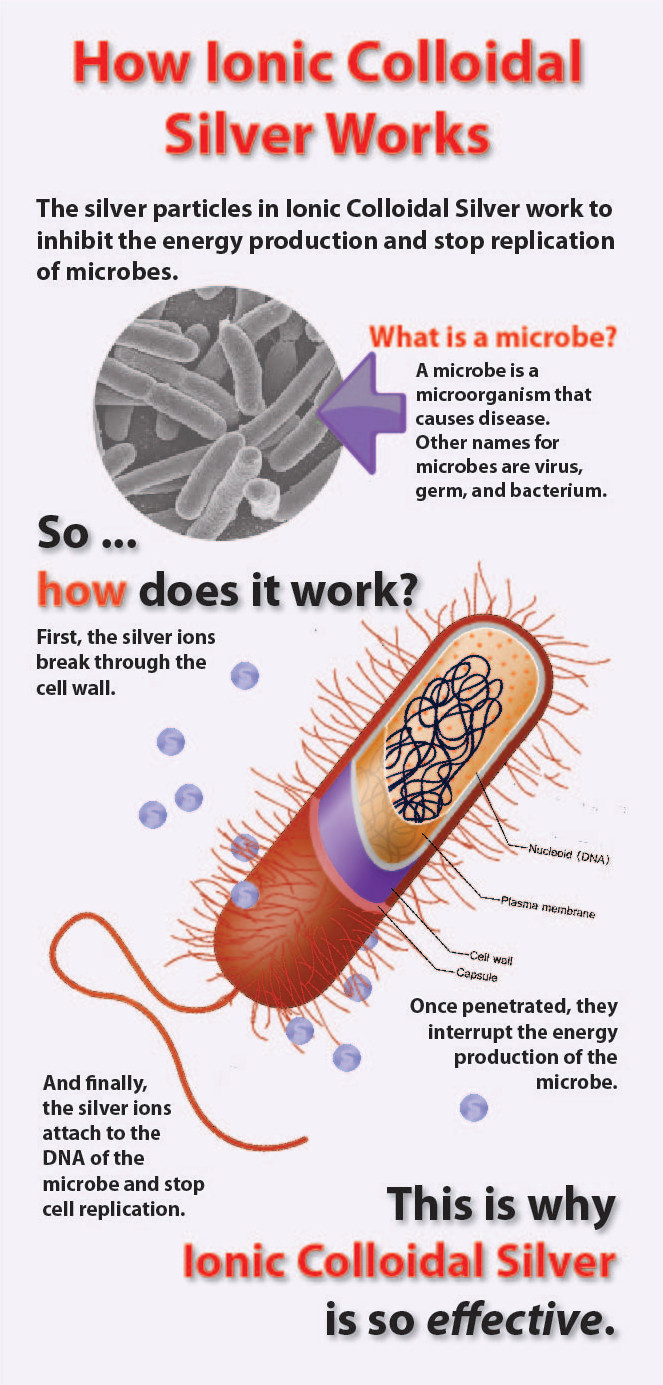
By Jana Taylor
How Ionic Colloidal Silver Works
We have long known the antimicrobial benefits of silver1 for health; after all, people have been using various forms of silver for thousands of years with great success. What remained unclear was the mechanism of how silver worked as an antimicrobial.
Modern science has only recently begun to understand how silver inhibits microbial growth2, and future studies will no doubt continue. As more and more strains of microbes become antibiotic resistant, the use of ionic colloidal silver as an effective treatment will continue to gain in popularity.
So, that being said, what has modern science learned about how silver works as an antimicrobial?
Ions are the key
The tiny silver ions in the silver are able penetrate the microbial cell wall1. This is a vitally important part of the process, and why it is important to make sure your silver is ‘ionic’3. It is the ability to penetrate the cell wall that gives silver its effectiveness as an antimicrobial, and having ionic silver gives you the best chance of cell penetration possible.
Halted energy production
Once inside the bacteria, the silver ions bind to and change the shape of cellular enzymes, which ultimately leads to the inactivation of key enzymes, such as those needed for cellular respiration. Silver ions additionally lead to an increased production of reactive oxygen species; tiny molecules that further damage microbial cell metabolism and reduce their ability to survive4. Once cellular energy production ceases, the microbe ultimately dies.
Binding to DNA
It has been proven that silver ions do associate with DNA once they enter the cell of a microbe5. What is not yet proven (but is suspected) is that the silver ions bond with the DNA and cause disruption in the ability to replicate, therefore shutting down any future harm that the microbe could do by reproducing itself in your system. Basically, it is thought that the microbes have been stopped in their tracks, unable to survive and replicate.
Conclusion
The studies that have been completed show that the antimicrobial properties of silver are genuine. Silver in an ionic form has the ability to cause damage to microbial cells by interacting with proteins and DNA as shown in experiments. In layman’s terms what this means for you is that you can feel confident in using silver to help support your immunity, because there is sound science to back it up.
SOURCES:
1 https://microbewiki.kenyon.edu/index.php/Silver_as_an_Antimicrobial_Agent
2 http://www.ncbi.nlm.nih.gov/pmc/articles/PMC2292600/
3 http://news.rice.edu/2012/07/11/ions-not-particles-make-silver-toxic-to-bacteria-3/
4 http://www.nature.com/news/silver-makes-antibiotics-thousands-of-times-more-effective-1.13232
5 http://www.nature.com/articles/srep10163
 Jana Taylor is a staff writer for Peaceful Mountain.
Jana Taylor is a staff writer for Peaceful Mountain.

 Fight the illness, not the fever
Fight the illness, not the fever